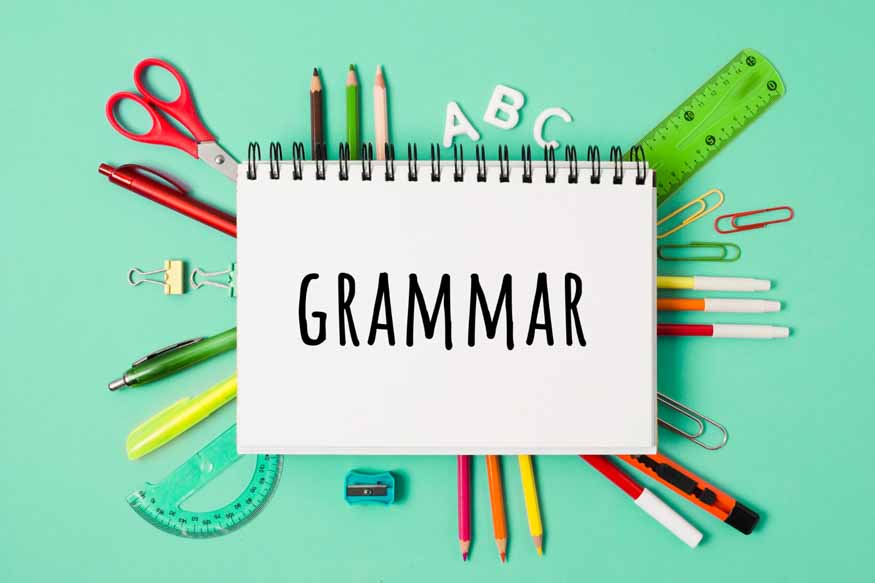As parents, we want to nurture our children’s minds in a way that is fun and engaging. While it may sound like a lot to handle, it really doesn’t have to be. Learning essential English grammar can be as engaging as playing with building blocks, if we know how to present it in an exciting way. So, let’s explore the world of English grammar concepts and how we can break them down into child-friendly nuggets of valuable information. It’s time to begin our grammatical adventure together!
Here are 10 fundamental rules in basic grammar topics:
- The Subject Matters
- The Predicate has Arrived
- Building the Story
- The Independent Clause
- Parts of Speech Make a Whole
Let’s begin with the building block of every sentence – the subject. It tells us who or what the sentence is about. We present the subject like we are unveiling the star of the show. For example, in the sentence “The mouse is running,” “The mouse” is the subject. It’s the ‘star’ we’re talking about.
Now, let’s meet the partner of the subject, the predicate. The predicate tells us what the subject is doing or what’s happening to it. In our previous sentence, “is sleeping” is the predicate. It shows us what the cat is doing – sleeping peacefully.
A sentence is like a sandwich; it needs bread (beginning) and filling (middle and end) to make it tasty! In English, a basic sentence structure starts with a capital letter, contains a subject and predicate, and ends with punctuation (usually a period, question mark or exclamation mark). This sentence structure helps what we are trying to say make sense.
Now, let’s talk about the heart of a sentence: the independent clause. This refers to a group of words that can stand alone as a complete thought. For example, “I love ice cream” is an independent clause because it’s a complete idea. But, “because it’s delicious” is not; it needs its partner to make sense.
English words are like puzzle pieces; they fit together to create sentences. There are different types of puzzle pieces called ‘parts of speech’.
These words include:
- Nouns: names of people, places or things
- Verbs: action words that tell us what we are doing
- Adjectives: words that describe nouns
- Adverbs: words that describe verbs
Learning these parts of speech helps children put their sentences together effectively.
- The Direct Objects
- Indirect Objects Exist, Too!
- Punctuation Keeps Us Going
- The Capital Idea
- Pause for the Colon
Let’s talk about the objects we put in our sentences– not the ones we play with! A direct object receives the ‘action’ of the verb. Basically, it is the direct object that the action is attached to. For example, in the sentence “She baked cookies,” “cookies” is the direct object because it’s what “she” baked.
Indirect objects add a little twist to our sentences. They tell us to whom or for whom something is done. For example, in the sentence “She gave her friend a gift,” “her friend” is the indirect object because it tells us who received the gift.
Punctuation is like traffic signs for sentences. Punctuation shows us when to pause, stop or express excitement. Commas, periods, question marks and exclamation marks are essential punctuation marks. Commas help us take a breath, periods tell us when to stop, question marks show curiosity and exclamation marks express excitement!
Capital letters are like the crowns of words. It makes them special and unique. We use them at the beginning of sentences and for proper nouns (like names of people, places, and days of the week). For example, ‘Monday’ starts with a capital ‘M’ because it’s the name of a weekday.
The colon is like a spotlight; it shines on what’s coming next. We use a colon before a list or to introduce something important. For example, “I love fruits: apples, bananas and oranges.” The colon tells us that a list of fruits is coming.
Incorporating Grammar into Playtime
Now that we’ve explored these 10 fundamental rules let’s see how we can make learning grammar fun! We all know that the more interesting a topic, the greater our retention power. So something as straightforward as English grammar rules doesn’t have to be boring, when it can be entertaining. And here’s how:
- Grammar Games: Play games like ‘Sentence Building Blocks’ where kids create sentences using colourful blocks, each representing a different part of speech. You can try different combinations of blocks and ask them which sentence combo makes the most sense or sounds the silliest!
- Storytelling: Encourage children to make up stories using their own sentences. Children love to use their imagination, so this activity is an ideal choice for teaching them about essential English grammar. And the English grammar concepts they use while storytelling will be easier to remember, too!
- Punctuation Parade: Arrange a ‘Punctuation Parade’ where children can dress up as different punctuation marks and act out their roles in sentences. A ‘Period’ will enact how to ‘stop’. A ‘Question Mark’ can express doubt or curiosity, looking for an answer. An ‘Exclamation Mark’ can jump around in excitement. And a ‘Comma’ can take a breather against the wall, while it pauses between two parts of a sentence or thought.
- Grammar Picnics: Take grammar lessons outdoors by organising ‘grammar picnics’ for your little ones. Using natural surroundings to explain subjects (birds, trees), predicates (singing, swaying) and objects (butterflies, flowers) helps children apply English grammar concepts to everyday things that they encounter.
- Arts and Crafts: Create a ‘Grammar Wall’ with colourful visuals of subjects, predicates and objects. Children can use craft materials to decorate and label each part. Using visual cues in an attractive eye-catching manner helps with a higher recall of the topics learnt.
Learning essential English grammar needn’t be an intimidating task. Now we know that basic grammar rules for kids can be taught in an engaging and memorable fashion, too. The key is to break these English grammar concepts down into smaller baby steps. At EuroKids, children not only have fun, but also make essential English grammar an exciting part of their linguistic journey.











